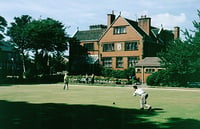
A new, innovative scientific study conducted by the Antiquities Authority, Tel Aviv University, and the Weizmann Institute helps to confirm significant parts of the Biblical account of the city of Jerusalem, according to a press release today (Thursday).
Among other things, the study, which tested the date of a hundred different sites, reveals significant activity in the city during the time of King David and Solomon (tenth century BCE) as well as many building activities done under the Kings of Judah in subsequent centuries.
According to Prof. Yuval Gadot of Tel Aviv University: "The new research allows us to study the development of the city: until now, most researchers have linked Jerusalem's growth to the west, to the period of King Hezekiah - just over 2700 years ago. The conventional assumption to date has been that the city expanded due to the arrival of refugees from the Kingdom of Israel in the north, following the Assyrian exile. However, the new findings strengthen the view that Jerusalem grew in size and spread towards Mount Zion already in the 9th century BCE, during the reign of King Jehoash, a hundred years before the Assyrian exile. In light of this, the new research teaches that the expansion of Jerusalem is a result of internal-Judean demographic growth and the establishment of political and economic systems."





















0 Comments